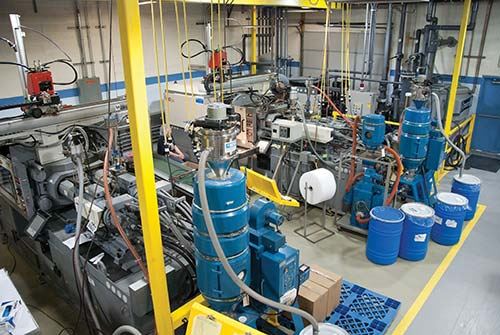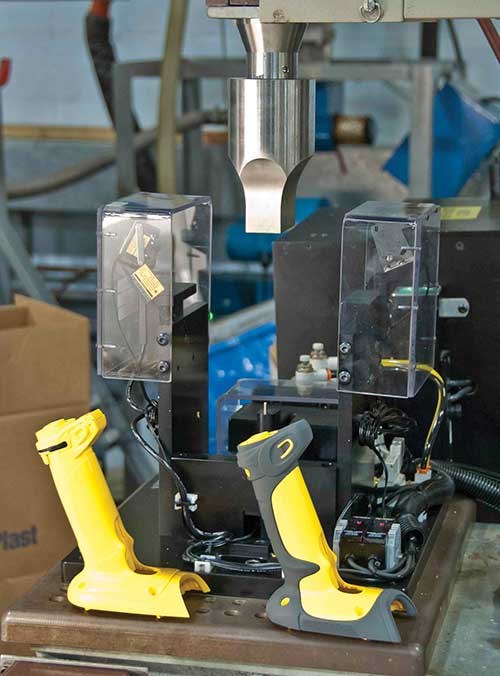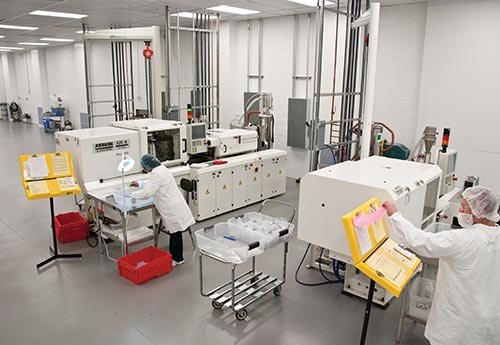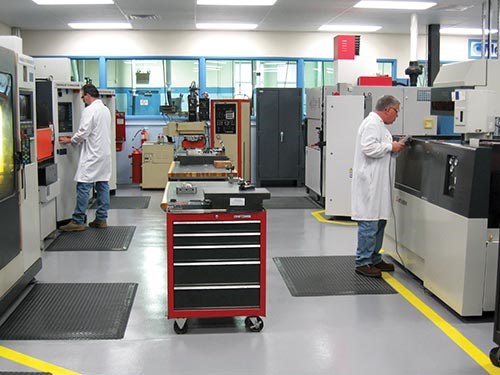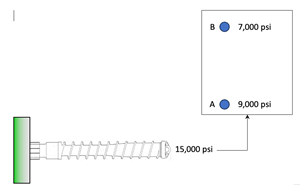Tips and Techniques: How MedPlast Became a Multi-Shot Specialist
It started in a garage and evolved into a multi-plant, $100 million operation that holds particular expertise in multi-shot molding.
It all started in his mother’s one-car garage. Robert Piccoli, then a journeyman toolmaker, and a partner launched a moldmaking business in 1969 called Dual Machine Tool. The business outgrew the garage, moved to a new location, and by 1984 expanded into custom injection molding. At that stage, the company was called Modern Plastic Techniques and moved to yet another facility in West Berlin, N.J. It was later bought by ATP’s Engineered Rubber & Plastics Group; and in 2008, ATP and another firm were merged into the new MedPlast Inc., based in Tempe, Ariz.
West Berlin is one of five locations of the $100-million MedPlast group. West Berlin now occupies 60,000 ft2 in four buildings, one of which houses the toolmaking facility for the whole company. There are also 44 injection presses of 28 to 300 tons, four of them double-barreled two-shot machines, with a fifth on order. That’s part of what makes MedPlast West Berlin unusual. “We’re among the largest two-shot operations on the East Coast,” says Piccoli, who is vp and general manager there. “We also build all our own two-shot molds.” What’s more, around 60% of the parts molded at West Berlin involve overmolding in some fashion—either automated two-shot molding in one machine or hand transfer from one press to another—or else are part of an assembly that incorporates overmolding.
TRENDING TOWARD TWO-SHOT
West Berlin today employs 165 and operates 24/5 but has been running 24/7 for the last three months. The plant primarily molds PC, ABS, PC/ABS, nylon, TPU, and a variety of other TPEs. Its molding business is divided between medical devices and high-end electronics such as barcode scanners. Last year, the firm invested $1 million in a Class 100,000 clean room to support the medical business. The rest of the plant is described by Piccoli as a “clean environment,” though not an actual certified clean room. Even the tool shop, whose output is 50% medical-related, is spotlessly clean. Medical manufacturing standards don’t require this level of cleanliness in moldmaking areas, “But it does reflect the way we operate as a company,” comments Piccoli.
“We originally got into two-shot molding through hand-transfer overmolding,” says Piccoli. “We completed our first two-shot project in 1995. We still do a significant amount of hand-transfer molding, but I see higher volume jobs in the future going two-shot. The tooling is more expensive, but if the volume is significant, the two-shot process offers better quality and less scrap.” Offsetting the higher cost of an individual two-shot mold are the cost of building two single-shot molds, of using two presses instead of one, the added labor cost, and the longer overall production time. “Some of our hand-transfer jobs could probably justify two-shot molding today,” Piccoli notes.
But he still sees a place for hand transfer. “If you have a complex tool with many cam actions, internal and external, it’s hard to tool that for automated two-shot. Another example is if you need to overmold simultaneously on different areas of a part.”
On the other hand, MedPlast West Berlin recently installed a 220-ton Arburg Allrounder 570C with horizontal clamp and both horizontal and vertical injection barrels. It is suited to overmolding on opposite sides of a substrate, such as a gasket and a soft-touch handle grip. The rest of the two-shot machines at West Berlin are Nissei models with side-by-side twin horizontal barrels.
The two-shot machines use different methods of part transfer from the first to second injection station—rotating platens, 180° “roll-over” platen, and rotating stripper plate (in the Arburg machine). Piccoli considers the last to be the most challenging from a tooling point of view: “You’re lifting the part off the core and presenting it to a new core and cavity.”
Most of West Berlin’s overmolding and two-shot jobs involve hard-soft material combinations, the exception being a clear PC lens in an opaque housing of high-heat PC. Some hand-transfer jobs today involve overmolding barcode scanner keypad assemblies or glass scan windows with both hard and soft materials in two different presses.
OVERMOLDING EXPERTISE
“There are not that many two-shot molders out there,” says Piccoli. “People get one press and think they’re a two-shot molder. But they lack the experience.”
“There’s no substitute for years of experience,” agrees Paul Koehn, senior account manager. “Customers ask us, ‘How come you overmold glass so well?’ It’s because we broke a lot of glass to get this good at it.”
“We got better by learning everything the hard way,” agrees engineering manager Doug Cain. “Medplast’s critical advantage is that we have designed and built our own two-shot tooling to precise specifications for the past 20 years.”
The key challenge, Piccoli emphasizes, is how you design the shutoffs to keep the materials separate. “We don’t like to overmold to an edge. It’s much better to separate the materials with a styling groove. You can put a thin core into the groove and shut off hard so there’s no flash or bleeding of the second material where it doesn’t belong. When you overmold to an edge, it’s hard to shut off against a flat surface beyond that edge, and using high shutoff pressure on that surface could damage the texture, if there is any.”
“We have to educate customers about part design,” adds Koehn. Customers put an arrow on the part drawing and say, ‘We want to overmold here,’ without knowing anything of the challenges involved. For example, you have to choose materials carefully for adhesion and moldability, and ensure that the overmolded melt isn’t too hot for the first material. For example, you should mold a regular PC over a high-heat PC, rather than the other way around.”
“There are so many TPU and TPE materials around today,” Piccoli points out, “you have to be familiar with the options available.” Another issue, says Cain, is that “customers often specify too thick an overmold.” That not only leads to poor cosmetics, but adds to cost and cycle time (TPEs already set up more slowly than rigid thermoplastics, he says); and shrinkage of a thick overmold adds stress on the substrate and can even deform it. “We’ve even had to change from unfilled to a glass-filled nylon substrate so it wouldn’t collapse after overmolding.” He doesn’t like to see more than 0.060 to 0.080 in. overmold thickness.
“I also worry about having enough land area between a critical feature, like a hole, and the edge of the overmold. You need more than 0.020 or 0.030 in. Upfront engineering with the customer definitely counts.”
There are other issues to master. According to Piccoli, “You need to watch out for features like ribs that could cause sinks under a styling groove or other critical location, creating a risk that the overmold material could flash over that sink.” Substrate surface finish affects overmold adhesion, Piccoli adds, but it’s hard to generalize whether a smooth or textured substrate is better. Gating is also critical for adhesion: “If you have a long flow of the overmold, you can get good adhesion near the gate but not at the end of flow, because of the pressure loss and melt cooling.”
“Don’t count just on a chemical bond for adhesion if you can also get a mechanical lock into the design,” advises Koehn. “For example, you can sometimes put a hole through the substrate using a vent pin. Flowing the overmold through the hole gives you a mechanical interlock. We learned that by trial and error. No product designer would think of that.”
CLEAN ROOM CULTURE SHOCK
Although West Berlin has always maintained a “clean area” and formerly used portable clean rooms enclosing specific molding presses, installation last year of the 5000-ft2 certified clean room required some adjustments to the workplace culture. “It comes down to the discipline of the people,” says Cain. He’s referring to everyday issues like learning to wear gowns and hair nets.
Clean manufacturing imposes other changes. Special tool boxes for machine maintenance never leave the clean room. All services and raw-materials handling and drying are located outside the clean room; and water, resin, etc. are delivered to the presses via closed piping. Product movement in and out of the clean room also had to be changed. No corrugated cartons allowed—only plastic totes. (MedPlast had already found that cardboard dust sometimes caused cosmetic defects in hand-transfer overmolding, so it now uses only plastic slip sheets.) Parts molded in the clean room go into bags, and those bags are packed into boxes outside the clean room.
When machine maintenance is performed, handheld particulate counters are use to monitor the air quality. Annually, the clean room will be subjected to a total wipe down of walls, floor, and ceiling. And the gowning room gets a weekly cleaning with special HEPA-filtered vacuums and dry mops.
Only half the eight machines in the clean room are all-electric. In future, however, West Berlin will probably buy only all-electrics, says Piccoli. “We like the electrics because they’re clean, energy-saving, and highly repeatable.”
The clean room has the Arburg two-shot press and seven other machines, with room for four or five more. One of the other presses feeds parts into an enclosed automated assembly system that ultrasonically welds them together with two other components. “We want to do more automated assembly,” says Piccoli. “We don’t want to be considered just a molder.”
Related Content
Three Key Decisions for an Optimal Ejection System
When determining the best ejection option for a tool, molders must consider the ejector’s surface area, location and style.
Read MoreGot Streaks or Black Specs? Here’s How to Find and Fix Them
Determining the source of streaking or contamination in your molded parts is a critical step in perfecting your purging procedures ultimately saving you time and money.
Read MoreOptimizing Pack & Hold Times for Hot-Runner & Valve-Gated Molds
Using scientific procedures will help you put an end to all that time-consuming trial and error. Part 1 of 2.
Read MoreUnderstanding the Effect of Pressure Losses on Injection Molded Parts
The compressibility of plastics as a class of materials means the pressure punched into the machine control and the pressure the melt experiences at the end of fill within the mold will be very different. What does this difference mean for process consistency and part quality?
Read MoreRead Next
For PLASTICS' CEO Seaholm, NPE to Shine Light on Sustainability Successes
With advocacy, communication and sustainability as three main pillars, Seaholm leads a trade association to NPE that ‘is more active today than we have ever been.’
Read MoreMaking the Circular Economy a Reality
Driven by brand owner demands and new worldwide legislation, the entire supply chain is working toward the shift to circularity, with some evidence the circular economy has already begun.
Read MoreBeyond Prototypes: 8 Ways the Plastics Industry Is Using 3D Printing
Plastics processors are finding applications for 3D printing around the plant and across the supply chain. Here are 8 examples to look for at NPE2024.
Read More

